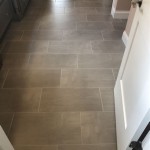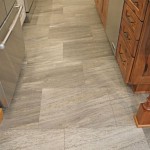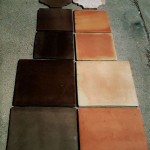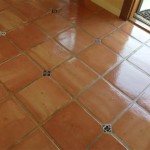DIY Delight: Mastering the Art of Installing Floating Floor Over Tiles
### Introduction Revitalizing your living space with a new flooring option can be a daunting task, especially if you're considering installing floating floor over tiles. But fear not, home improvement enthusiasts! This comprehensive guide will walk you through the process step by step, ensuring a successful and satisfying DIY project. Whether you're a seasoned pro or a novice eager to learn, let's dive into the world of floating floors and transform your home's interior. ### Step 1: Preparation – Laying the Groundwork 1.Clear the Canvas:
Begin by removing all existing furniture and fixtures from the room. Ensure the subfloor is free of debris, nails, and any uneven surfaces. 2.Moisture Control:
Assess the moisture levels in your subfloor, particularly if it's a concrete slab. If moisture is present, install a vapor barrier to prevent moisture from seeping into the floating floor. 3.Leveling the Field:
If your subfloor is uneven, utilize a self-leveling compound to create a smooth and flat surface. This step is crucial for a flawless floating floor installation. ### Step 2: Floating Floor Selection – Finding the Perfect Match Floating floors come in a myriad of materials, styles, and textures. Choose a flooring option that complements your home's décor and lifestyle: 1.Laminate:
An affordable and durable option, laminate flooring mimics the appearance of hardwood or stone. 2.Engineered Hardwood:
For a more authentic hardwood look, engineered hardwood offers a multilayer construction that combines durability with aesthetic appeal. 3.Luxury Vinyl Plank:
Known for its water resistance and resilience, luxury vinyl plank flooring provides a realistic wood or stone appearance. ### Step 3: Gathering Essential Tools – Arm Yourself Ensure you have the right tools to execute the installation process smoothly: 1.Measuring Tape:
Accurately measure the room dimensions and calculate the amount of flooring required. 2.Utility Knife:
This versatile tool is used for cutting and shaping the floating floor planks. 3.Spacers:
These small pieces help maintain consistent gaps between the planks, allowing for expansion and contraction. 4.Tapping Block:
Used in conjunction with a hammer, the tapping block helps lock the planks together securely. 5.Hammer:
A standard hammer is necessary for tapping the tapping block. 6.Saw:
A hand saw or power saw is needed for cutting planks to fit around obstacles like door frames and corners. 7.Safety Gear:
Don't forget safety glasses and gloves to protect yourself during the installation process. ### Step 4: Installation Process – Bringing It All Together 1.Plank Acclimation:
Allow the floating floor planks to acclimate to the room's temperature and humidity for at least 48 hours before installation. 2.Starting Point:
Begin the installation in a corner of the room, ensuring the planks are parallel to the longest wall. 3.Floating Floor Installation:
Using the tapping block and hammer, connect the planks by tapping the short sides together. Continue this process, ensuring each plank is securely locked in place. 4.Expansion Gaps:
Maintain a consistent gap around the perimeter of the room using spacers. These gaps allow the floating floor to expand and contract naturally. 5.Cutting and Fitting:
When encountering obstacles like door frames or corners, use a saw to cut the planks to size. Ensure precise measurements for a seamless fit. 6.Finishing Touches:
Once the entire floor is installed, remove the spacers and install baseboards or quarter rounds to cover the expansion gaps and provide a polished look. ### Step 5: Maintenance and Care – Nurturing Your New Floor 1.Regular Cleaning:
Sweep or vacuum your floating floor regularly to remove dust and dirt. Use a slightly damp mop for deeper cleaning, but avoid excessive moisture. 2.Spill Response:
Clean up spills immediately to prevent staining or damage to the flooring. Use a mild detergent and water solution, avoiding harsh chemicals. 3.Protective Measures:
Place mats or rugs under furniture legs to prevent scratches or indentations. Avoid rolling heavy objects directly on the floor. 4.Sunlight Protection:
Minimize direct sunlight exposure to prevent fading or discoloration of the floating floor. Use curtains or blinds to regulate the amount of sunlight entering the room. ### Conclusion Installing floating floor over tiles is a rewarding DIY project that can transform your living space. With careful preparation, the right tools, and a step-by-step approach, you can achieve a professional-looking floating floor that enhances the beauty and functionality of your home. Remember to follow the manufacturer's instructions for specific care and maintenance guidelines. Happy DIY-ing!
Can Timber Flooring Be Laid Over Tiles Cb Floors

How To Install A Floating Tile Floor

Can You Put Laminate Flooring Over Tile Twenty Oak

Can You Lay Hybrid Flooring Over Tiles The Guys

Floating Vs Glue Down Elaborate Floors

Can You Install Wood Flooring Over Tiled Floors Havwoods

How To Install Laminate Flooring Over A Tile Floor 2024 Today S Homeowner

How To Install A Floating Tile Floor

Laminate Flooring In Basement Install A Floating Floor Over Existing Tile The Money Pit

Installing Laminate Tile Over Ceramic Diy Floors Wonderhowto
Related Posts








